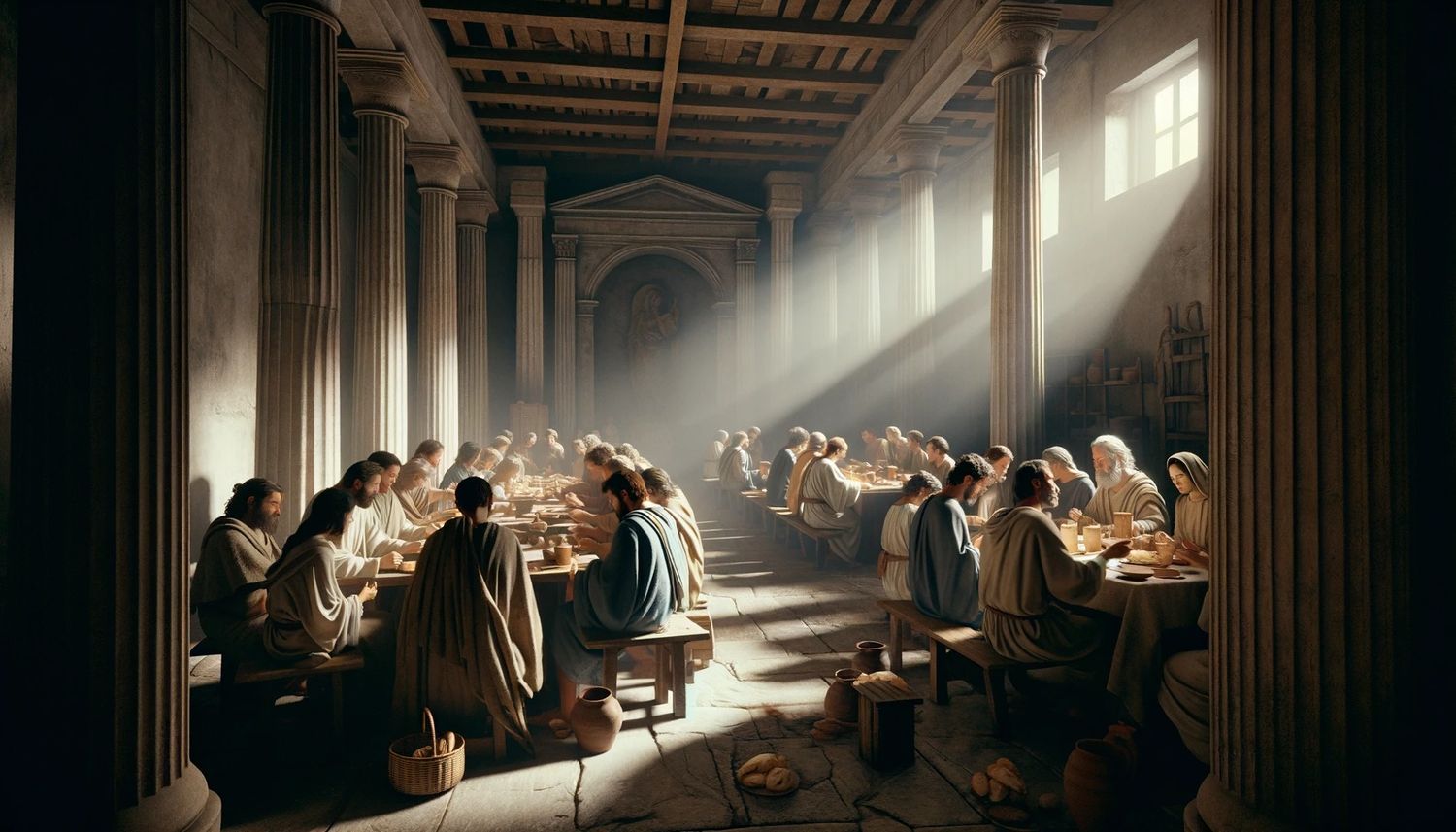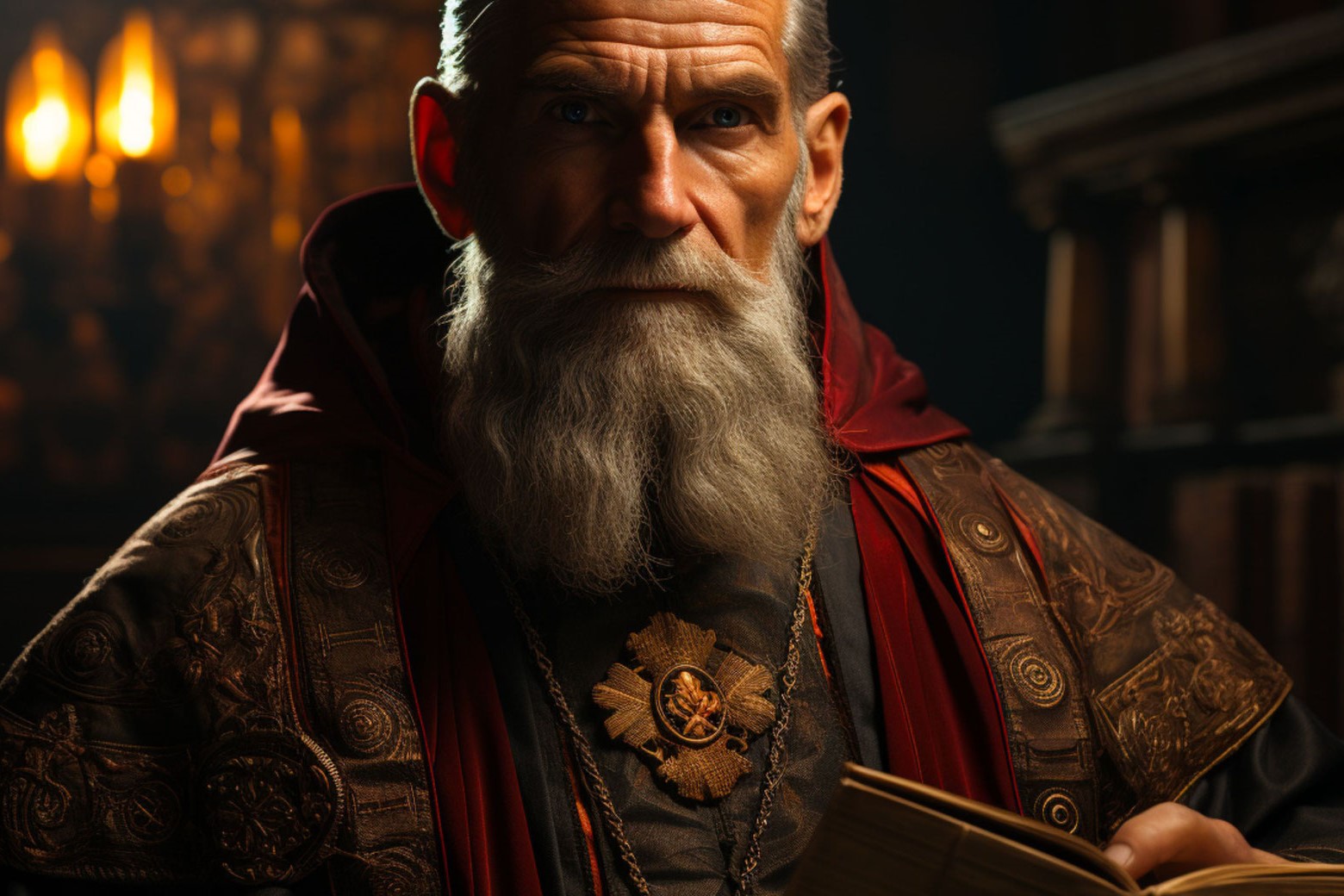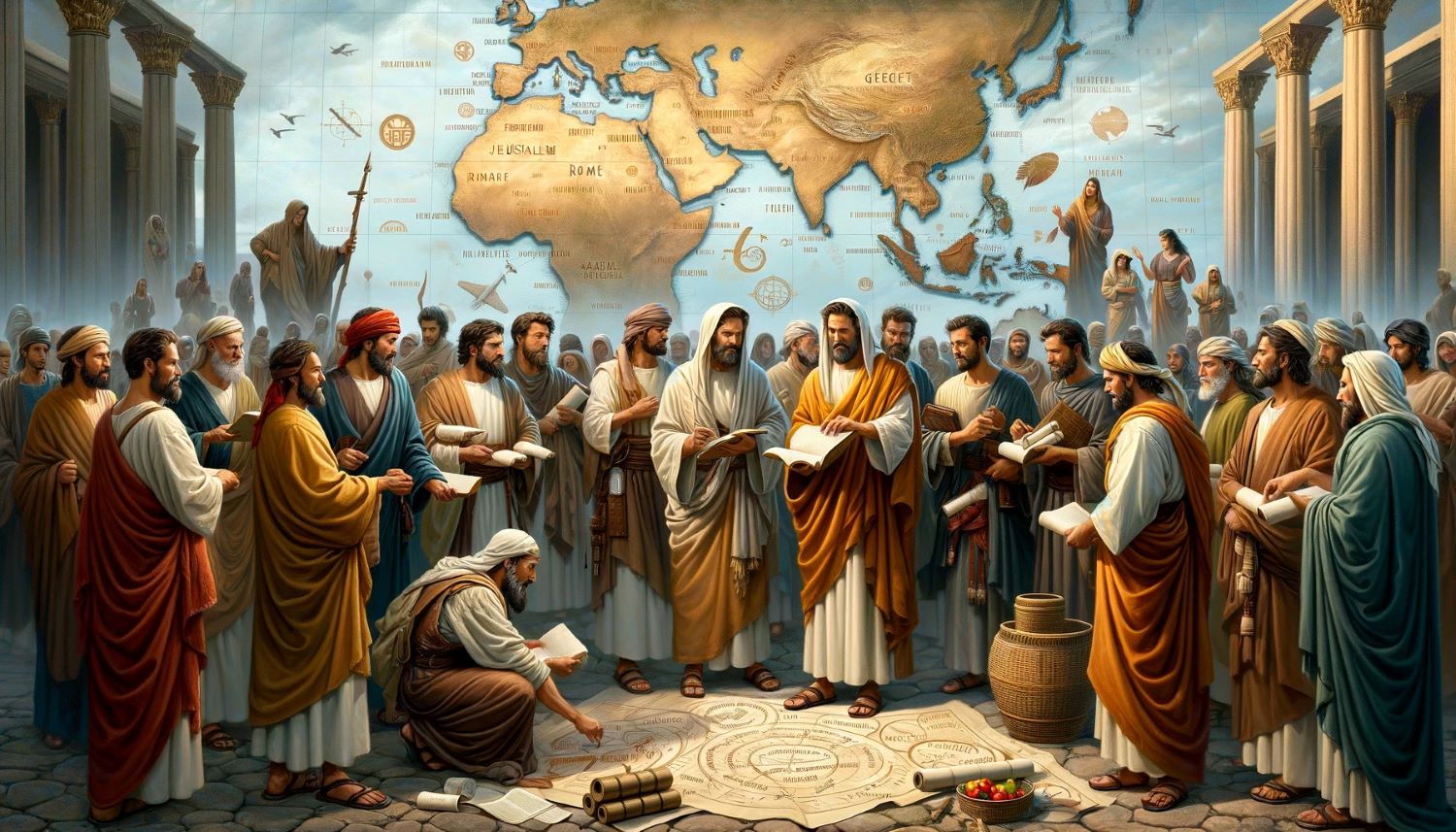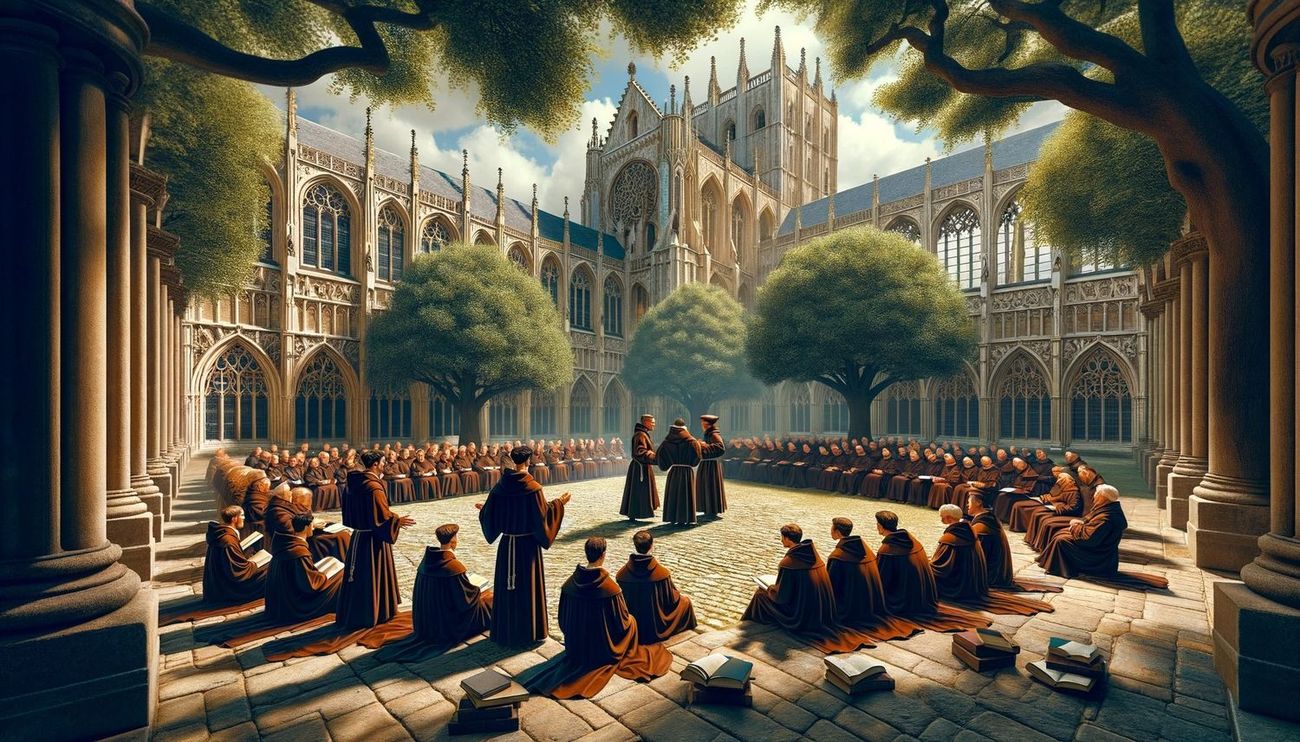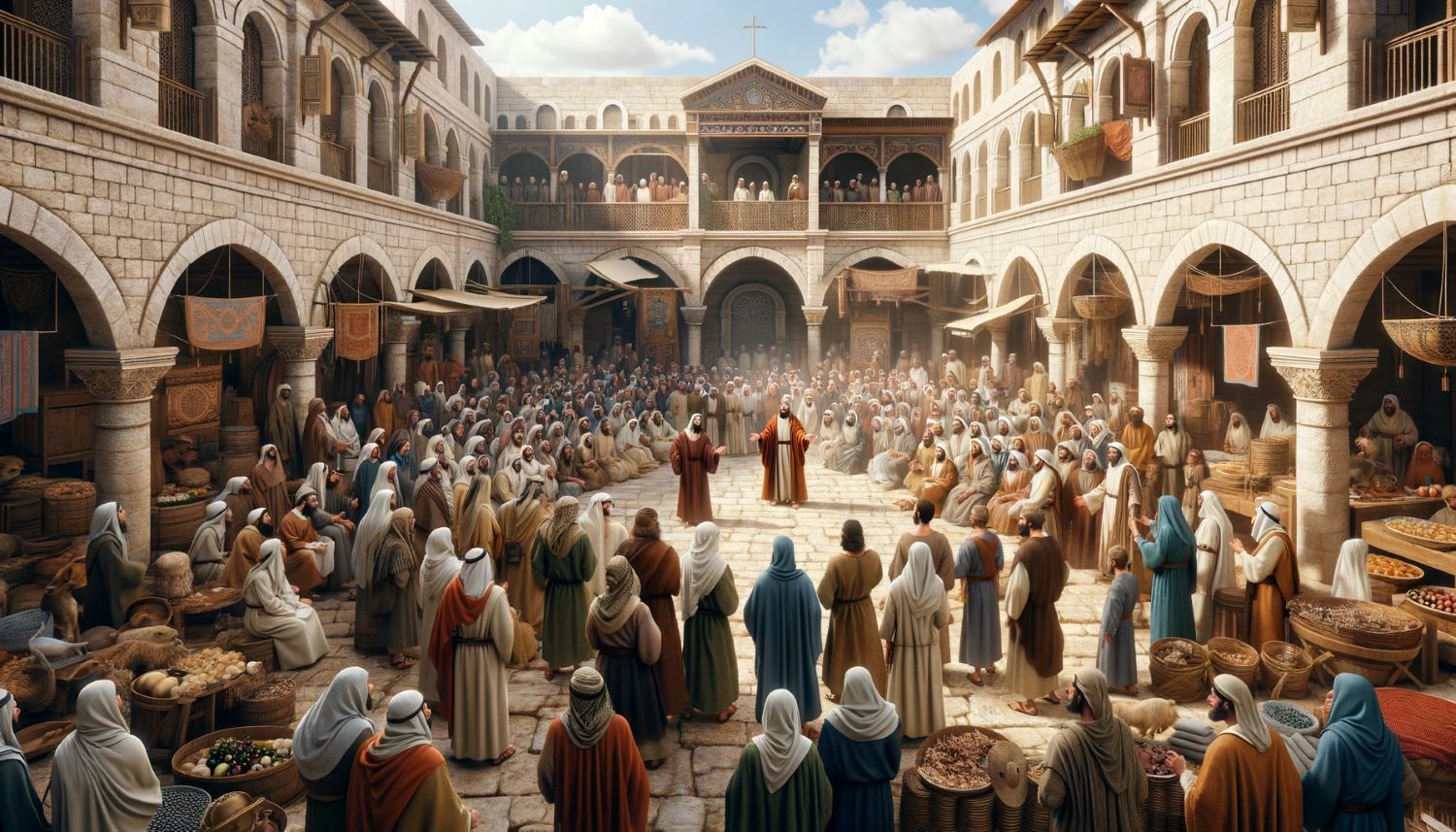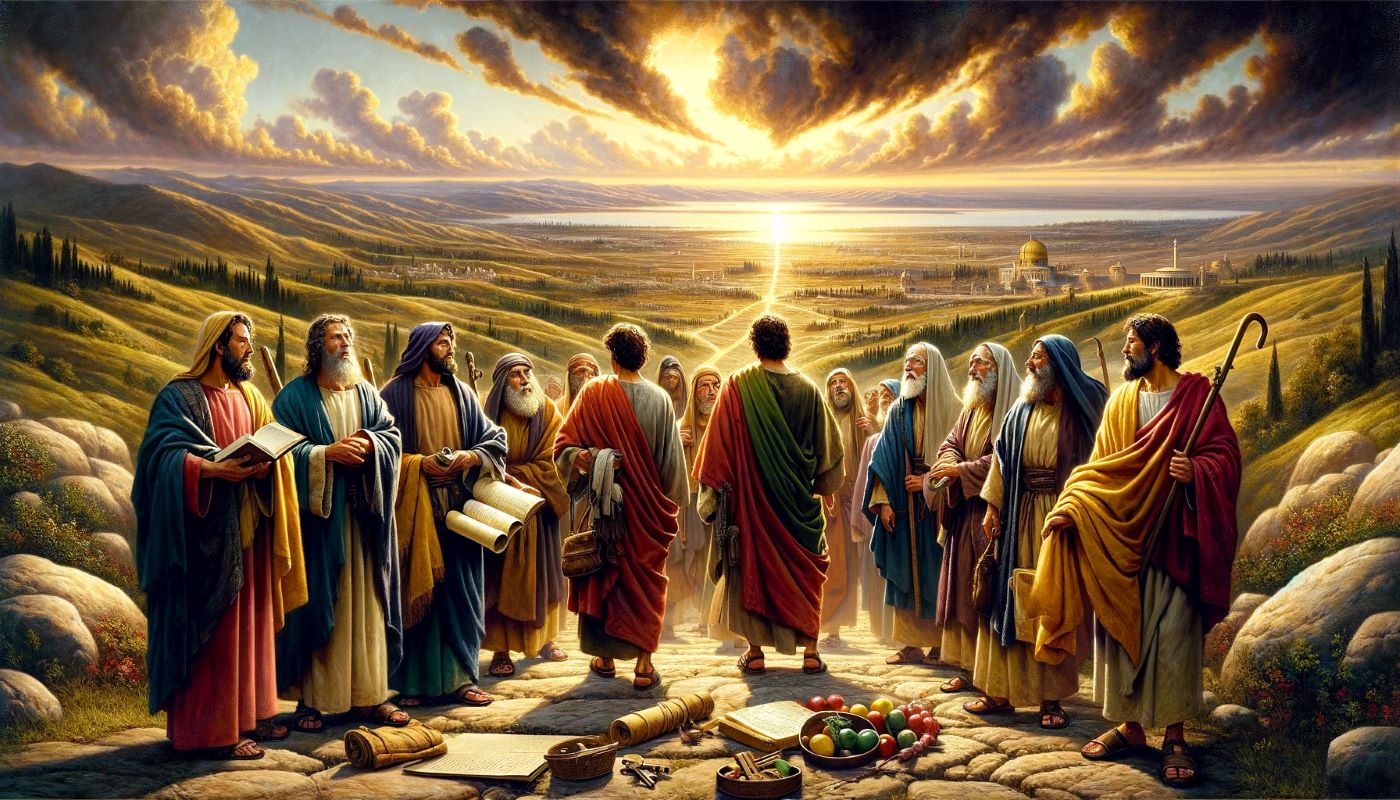Home>Theology and Spirituality>Where Did Catholicism Spread
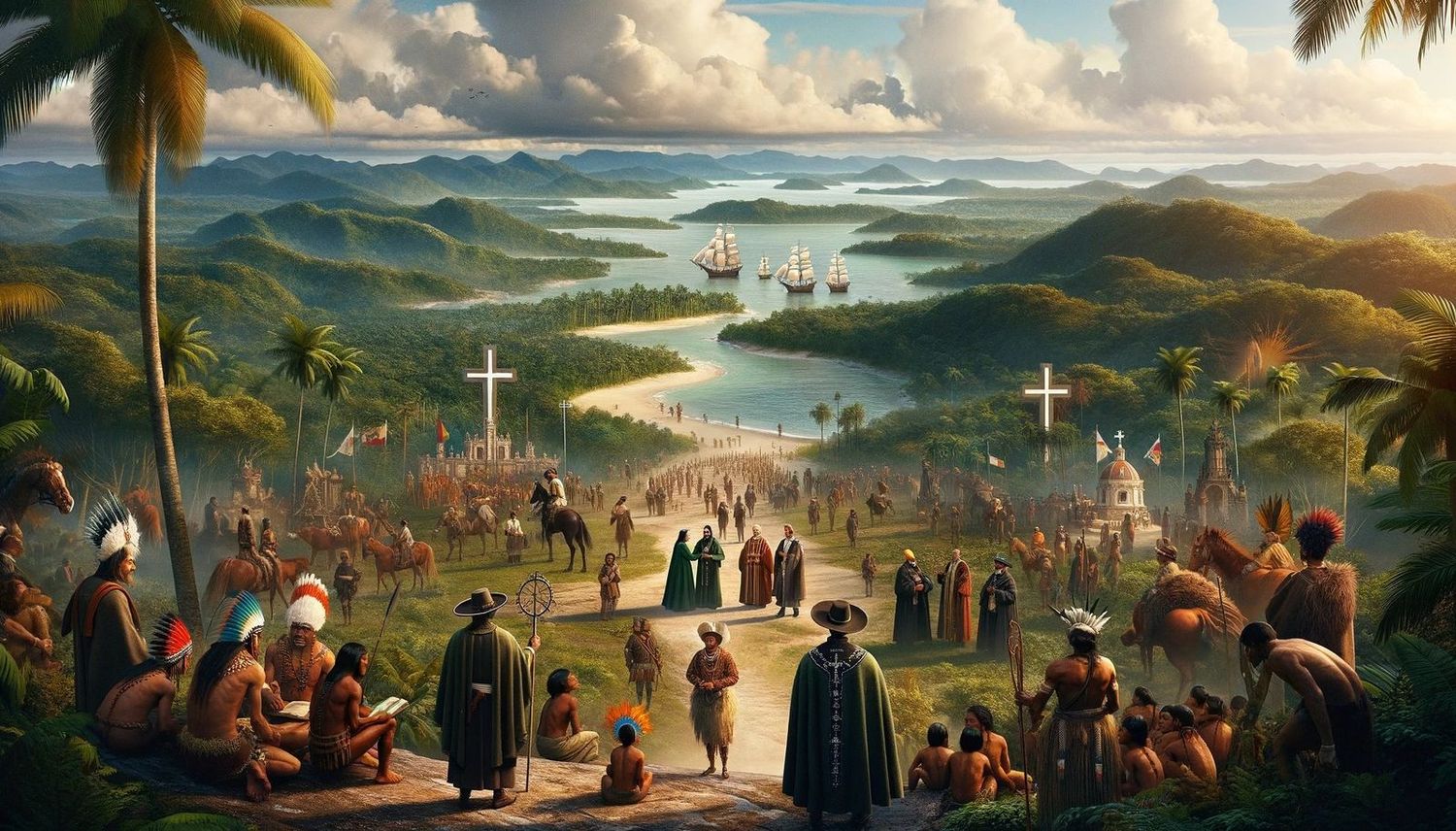

Theology and Spirituality
Where Did Catholicism Spread
Published: February 15, 2024
Ericka Andersen, an editor at Christian.net, expertly merges digital strategy with content creation, focusing on faith and societal issues. Her communication skills enhance the platform's engaging narratives, fostering meaningful dialogue on belief's impact on society.
Discover the global spread of Catholicism and its impact on theology and spirituality. Explore the historical and cultural influences that shaped its expansion.
(Many of the links in this article redirect to a specific reviewed product. Your purchase of these products through affiliate links helps to generate commission for Christian.net, at no extra cost. Learn more)
Table of Contents
Introduction
Catholicism, one of the oldest and most widespread branches of Christianity, has a rich history of global expansion. From its origins in the Eastern Mediterranean to its influence across continents, the spread of Catholicism has shaped cultures, societies, and individuals for centuries. This article delves into the remarkable journey of Catholicism, exploring its early spread and its profound impact on Europe, the Americas, Africa, and Asia.
The story of Catholicism's expansion is a testament to the enduring power of faith and the human spirit. It is a narrative of missionaries and martyrs, of triumphs and challenges, and of the enduring quest to share the teachings of Jesus Christ with people from diverse backgrounds and traditions. As we embark on this exploration, we will uncover the pivotal moments and influential figures that have contributed to the global presence of Catholicism.
Join us on a captivating journey through time and space as we unravel the fascinating tale of how Catholicism spread across the world, leaving an indelible mark on the hearts and minds of millions.
Early Spread of Catholicism
The early spread of Catholicism is intricately woven into the tapestry of ancient history, tracing its roots to the birth of Christianity in the Eastern Mediterranean. Following the crucifixion and resurrection of Jesus Christ, his disciples fervently carried forth his teachings, laying the foundation for the expansion of the Christian faith. The apostle Peter, revered as the first Bishop of Rome, played a pivotal role in establishing the early Christian community in Rome, which would later evolve into the seat of the Catholic Church.
Amidst the backdrop of the Roman Empire, Christianity faced periods of both persecution and growth. The martyrdom of early Christians, including prominent figures such as Saints Peter and Paul, fueled the spread of the faith through the profound devotion and unwavering courage of its followers. The conversion of Emperor Constantine to Christianity in the 4th century marked a significant turning point, leading to the Edict of Milan in 313 AD, which granted tolerance to Christians and paved the way for the legitimization of Christianity within the empire.
As the Roman Empire gradually declined, the influence of the Catholic Church continued to expand, embracing diverse cultural practices and traditions as it spread across Europe. The missionary efforts of saints such as Patrick, Augustine of Canterbury, and Boniface were instrumental in bringing Catholicism to regions beyond the Mediterranean, including Ireland, England, and Germany. Monastic communities, such as the renowned Irish monasteries, served as centers of learning and spiritual guidance, contributing to the dissemination of Catholic teachings throughout the continent.
The establishment of the Papal States and the crowning of Charlemagne as Holy Roman Emperor in 800 AD further solidified the authority and reach of the Catholic Church in medieval Europe. The fusion of religious and political power, coupled with the missionary zeal of clergy and religious orders, propelled Catholicism into the fabric of European society, shaping its cultural, artistic, and intellectual landscape.
The early spread of Catholicism, characterized by steadfast devotion, missionary endeavors, and the convergence of diverse cultures, laid the groundwork for its enduring influence across continents. The journey of Catholicism from its humble origins to its global presence is a testament to the resilience and transformative power of faith, transcending geographical boundaries and leaving an indelible imprint on the course of human history.
Spread of Catholicism in Europe
The spread of Catholicism in Europe is a captivating saga that unfolds against the backdrop of diverse cultures, historical upheavals, and the enduring legacy of faith. From the early missionary endeavors to the profound influence on medieval society, Catholicism's journey across the European continent is a testament to its enduring impact.
During the early centuries of Christianity, the seeds of Catholicism took root in various regions of Europe through the dedicated efforts of missionaries and the establishment of Christian communities. The missionary zeal of saints such as Patrick, who evangelized Ireland, and Augustine of Canterbury, who brought Christianity to England, played a pivotal role in expanding the influence of the Catholic Church beyond the Mediterranean. These efforts laid the foundation for the integration of Christian beliefs into the fabric of European societies, shaping their spiritual and cultural landscapes.
The medieval period witnessed the zenith of Catholicism's influence in Europe, as the Church became a central pillar of societal organization and spiritual guidance. The establishment of monastic communities, such as the Benedictines and Cistercians, not only fostered spiritual devotion but also contributed to the preservation and dissemination of knowledge, art, and literature. The architectural marvels of Gothic cathedrals, adorned with intricate sculptures and stained glass, stand as enduring testaments to the profound impact of Catholicism on European art and architecture.
The authority of the Catholic Church extended beyond matters of faith, permeating the political and social structures of medieval Europe. The crowning of Charlemagne as Holy Roman Emperor in 800 AD symbolized the fusion of religious and temporal power, solidifying the Church's influence on the continent. The canon law, education, and the patronage of the arts by the Church further entrenched Catholicism as a defining force in the shaping of European civilization.
The spread of Catholicism in Europe reflects a tapestry of devotion, cultural exchange, and the enduring quest for spiritual enlightenment. Its journey through the annals of European history has left an indelible mark, shaping the values, traditions, and collective consciousness of diverse nations. The legacy of Catholicism in Europe stands as a testament to the enduring power of faith and the profound impact of religious traditions on the course of human civilization.
Spread of Catholicism in the Americas
The spread of Catholicism in the Americas unfolds as a compelling narrative of exploration, evangelization, and cultural exchange. Following the arrival of European explorers in the 15th and 16th centuries, Catholic missionaries embarked on a profound journey to bring the teachings of Christianity to the indigenous peoples of the New World.
The Spanish conquest of the Americas, led by figures such as Hernán Cortés and Francisco Pizarro, brought forth a complex interplay of colonization and evangelization. Spanish missionaries, including prominent Franciscans and Dominicans, ventured into the heart of the Americas, fervently seeking to spread the message of Christianity. Their efforts were marked by the establishment of missions and the integration of Christian teachings with indigenous beliefs, leading to the emergence of syncretic forms of worship that blended Catholic rituals with native traditions.
The arrival of the Portuguese in Brazil also heralded the introduction of Catholicism to South America, as Jesuit missionaries undertook ambitious endeavors to evangelize the indigenous populations. The Jesuits, known for their commitment to education and social justice, played a pivotal role in shaping the religious landscape of Brazil and other regions, leaving a lasting imprint on the spiritual and cultural identity of the continent.
The enduring legacy of Catholicism in the Americas is exemplified by the rich tapestry of religious practices, traditions, and iconography that have permeated the collective consciousness of diverse communities. The veneration of Catholic saints, the celebration of religious festivals, and the vibrant art and architecture of cathedrals and churches stand as enduring testaments to the profound influence of Catholicism on the cultural heritage of the Americas.
The spread of Catholicism in the Americas is a testament to the resilience of faith and the transformative power of religious traditions in shaping the destinies of nations. Its journey across the continents has engendered a profound legacy, intertwining the spiritual narratives of diverse peoples and fostering a tapestry of beliefs that continues to resonate through the annals of history.
Spread of Catholicism in Africa
The spread of Catholicism in Africa is a captivating narrative that unfolds against the backdrop of diverse cultures, historical dynamics, and the enduring legacy of faith. The introduction of Catholicism to the African continent can be traced back to the early waves of European exploration and colonization, particularly during the era of the transatlantic slave trade and the subsequent missionary endeavors.
Portuguese explorers, including notable figures such as Bartolomeu Dias and Vasco da Gama, played a pivotal role in establishing early contact between Europe and Africa. With their arrival on the shores of Africa, they brought with them not only trade goods but also the teachings of Christianity, marking the initial seeds of Catholicism's presence on the continent.
The missionary zeal of Catholic orders, such as the Jesuits and the Franciscans, became instrumental in the propagation of the Christian faith across various regions of Africa. These missionaries, driven by a fervent commitment to evangelization, ventured into the interior of the continent, establishing missions and schools while seeking to reconcile Christian teachings with indigenous beliefs and traditions.
The enduring legacy of Catholicism in Africa is exemplified by the vibrant tapestry of religious practices, traditions, and the establishment of educational and healthcare institutions by Catholic missionaries. The Church's emphasis on social justice, education, and healthcare has left a profound impact on the lives of countless individuals and communities across the continent.
The spread of Catholicism in Africa reflects a complex interplay of cultural exchange, adaptation, and the enduring quest for spiritual enlightenment. Its journey through the annals of African history has left an indelible mark, shaping the values, traditions, and collective consciousness of diverse nations. The legacy of Catholicism in Africa stands as a testament to the enduring power of faith and the profound impact of religious traditions on the course of human civilization.
Spread of Catholicism in Asia
The spread of Catholicism in Asia unfolds as a captivating narrative of cultural encounters, missionary endeavors, and the enduring legacy of faith. The introduction of Catholicism to Asia can be traced back to the early waves of European exploration and trade, which brought the teachings of Christianity to the shores of the continent.
Portuguese explorers, notably Vasco da Gama and Francisco Xavier, played a pivotal role in establishing early contact between Europe and Asia. Their arrival in regions such as India, Japan, and Southeast Asia marked the initial seeds of Catholicism's presence on the continent. The missionary zeal of figures like Francisco Xavier, who is revered as the patron saint of missions, became instrumental in the propagation of the Christian faith across Asia.
In Japan, the efforts of Catholic missionaries led to the establishment of vibrant Christian communities, particularly in regions such as Nagasaki. However, the spread of Catholicism in Japan faced periods of persecution and suppression, culminating in the martyrdom of numerous Christians during the Edo period. Despite these challenges, the enduring legacy of Catholicism in Japan is reflected in the resilience and faith of the hidden Christians, who clandestinely preserved their religious traditions for generations.
In India, the arrival of Portuguese colonizers and missionaries left a lasting imprint on the religious landscape, particularly in regions such as Goa and Kerala. The fusion of Catholic rituals with indigenous customs and the establishment of educational and healthcare institutions by Catholic orders contributed to the enduring presence of Catholicism in the region.
The missionary endeavors of Catholic orders, including the Jesuits and Franciscans, also extended to regions such as China and Southeast Asia, where they sought to reconcile Christian teachings with diverse cultural and religious traditions. The enduring legacy of Catholicism in Asia is exemplified by the vibrant tapestry of religious practices, traditions, and the establishment of educational and healthcare institutions by Catholic missionaries. The Church's emphasis on social justice, education, and healthcare has left a profound impact on the lives of countless individuals and communities across the continent.
The spread of Catholicism in Asia reflects a complex interplay of cultural exchange, adaptation, and the enduring quest for spiritual enlightenment. Its journey through the annals of Asian history has left an indelible mark, shaping the values, traditions, and collective consciousness of diverse nations. The legacy of Catholicism in Asia stands as a testament to the enduring power of faith and the profound impact of religious traditions on the course of human civilization.
Conclusion
The remarkable journey of Catholicism's global spread is a testament to the enduring power of faith and the profound impact of religious traditions on the course of human history. From its humble origins in the Eastern Mediterranean to its far-reaching influence across continents, Catholicism has woven a rich tapestry of cultural exchange, missionary zeal, and the enduring quest for spiritual enlightenment.
The early spread of Catholicism, characterized by the unwavering dedication of missionaries and the convergence of diverse cultures, laid the foundation for its enduring influence. The fusion of religious and political power in medieval Europe, coupled with the missionary endeavors of saints and monastic communities, propelled Catholicism into the fabric of European society, shaping its cultural, artistic, and intellectual landscape.
In the Americas, the arrival of European explorers and missionaries heralded a profound journey of exploration, evangelization, and cultural exchange. The enduring legacy of Catholicism in the Americas is exemplified by the vibrant tapestry of religious practices, traditions, and the integration of Christian teachings with indigenous beliefs, leaving a lasting imprint on the spiritual and cultural identity of the continent.
In Africa, the introduction of Catholicism during the era of exploration and colonization led to a complex interplay of cultural exchange and the establishment of missions and educational institutions. The Church's emphasis on social justice, education, and healthcare has left a profound impact on the lives of countless individuals and communities across the continent, shaping the values and collective consciousness of diverse nations.
In Asia, the missionary endeavors of Catholic orders, including the Jesuits and Franciscans, sought to reconcile Christian teachings with diverse cultural and religious traditions. The enduring legacy of Catholicism in Asia is reflected in the vibrant tapestry of religious practices, traditions, and the establishment of educational and healthcare institutions, leaving a profound impact on the lives of individuals and communities across the continent.
As we reflect on the global spread of Catholicism, we are reminded of the resilience and transformative power of faith, transcending geographical boundaries and shaping the destinies of nations. The enduring legacy of Catholicism stands as a testament to the enduring power of faith and the profound impact of religious traditions on the course of human civilization, leaving an indelible mark on the hearts and minds of millions across the world.
